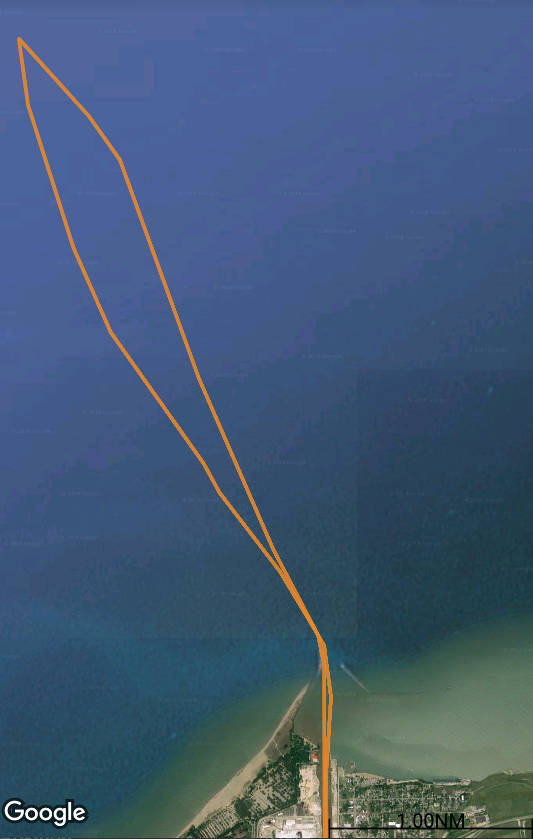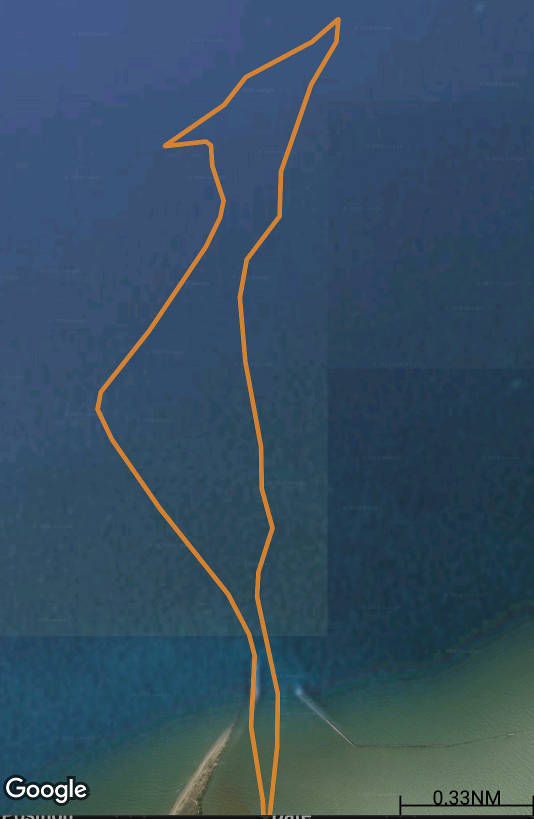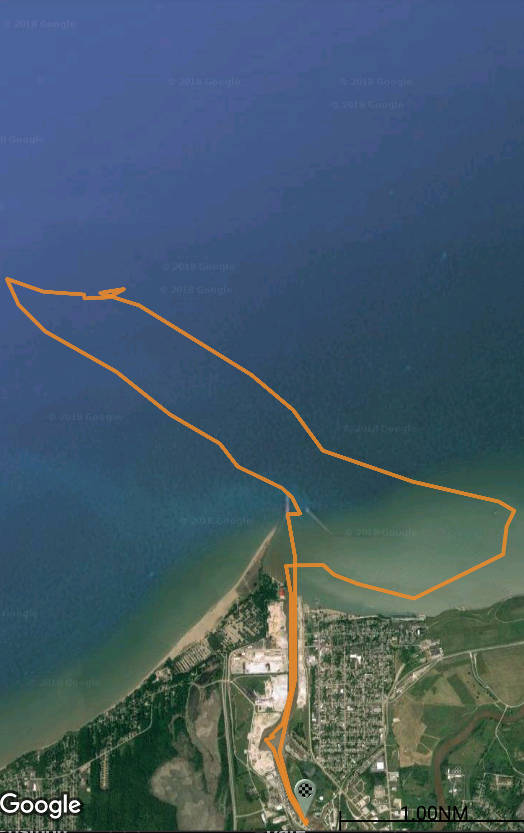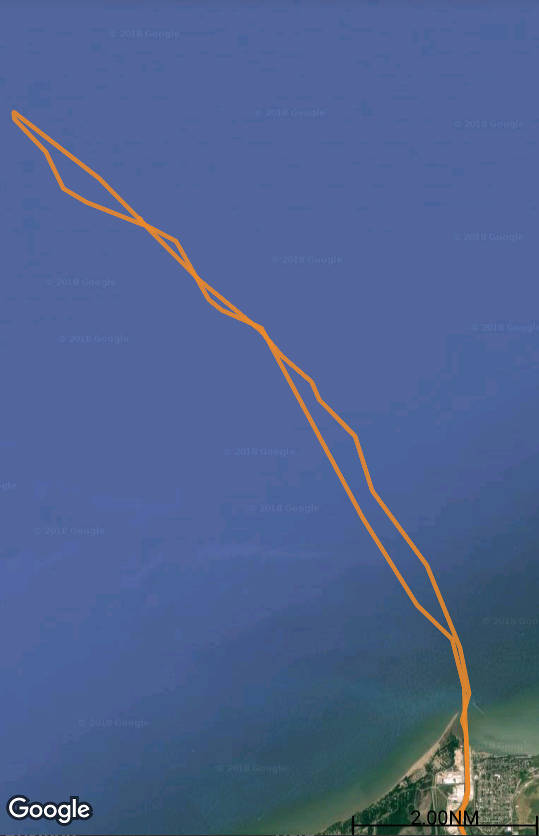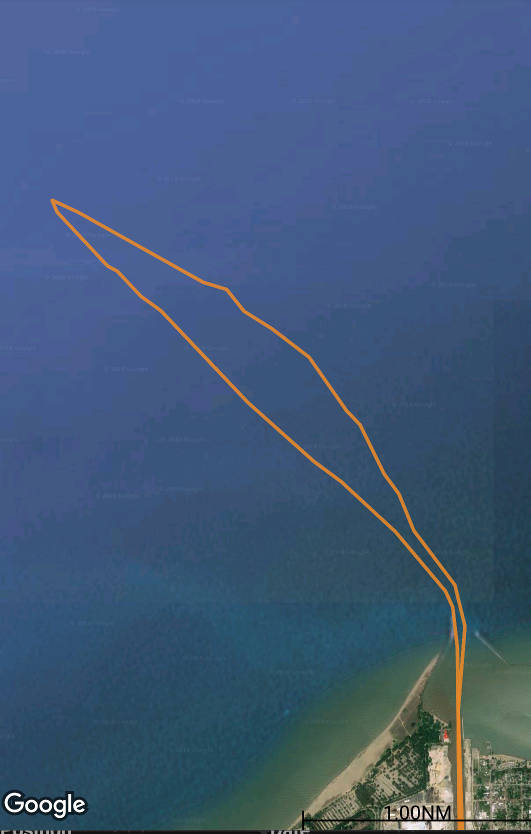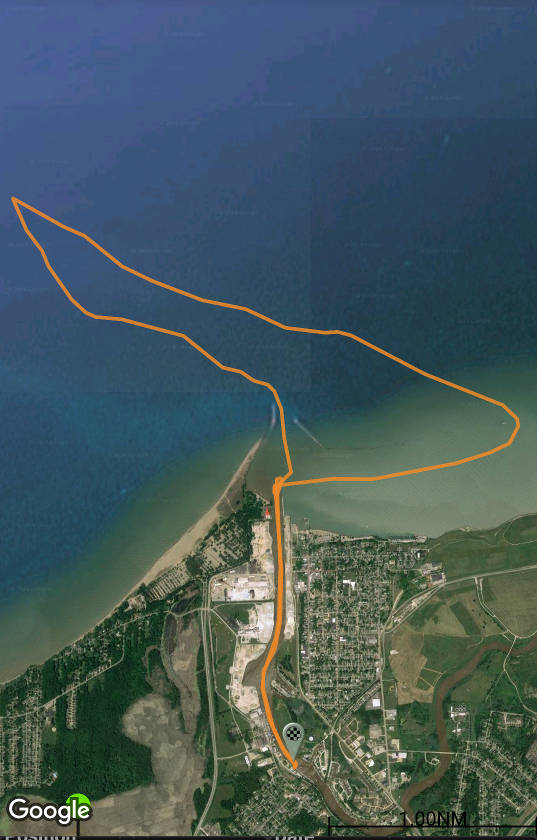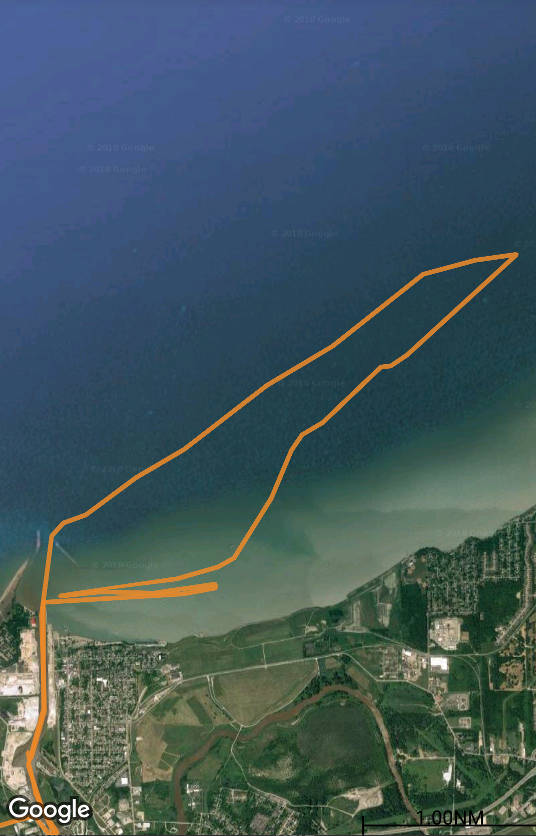

| Pearson 10M Hoyt Jib Boom |
Hoyt Jib Boom by Forespar
Hoyt Jib Boom Brochure (PDF)
|
The Hoyt boom does three things:
First it makes the head sail self tacking. That's a big labor savings for short-handed sailing. Second it's self vanging and controls the clew of the sail the same way the boom on the main does. Typically as you fall off from close hauled you ease the jib sheet. But to maintain proper trim over the entire sail you need to move the lead outboard. You can only do that as far as you have deck and after that the top of the sail starts loosing shape and you loose drive. The Hoyt jib boom solves that problem by always controlling the clew. So at anything beyond a close reach you still have proper sail shape over the entire jib. The jib is smaller (about 85%) but it is working better as it's eased. Third, as you turn further off the wind the jib boom acts as a wisker pole that is always in place and working and is as easy to gybe as it is to tack. You would probably get more drive from a poled out genoa but then you have to deal with rigging the pole, adjsuting it for any course change, and moving it to the other side of the boat in a gybe.
Hoyt Jib Boom info at garyhoyt.com There are trade-offs. The boom makes the sail self tacking but now you have an impediment to foredeck work (though it is an excellent hand-hold as you move forward while sailing). The sail is more efficient but it's smaller. The sail is smaller but you can sheet it in closer for better up-wind performance. The rigging is a bit more complex with some added blocks but there is only one sheet to work and it needs no attention in a tack. |
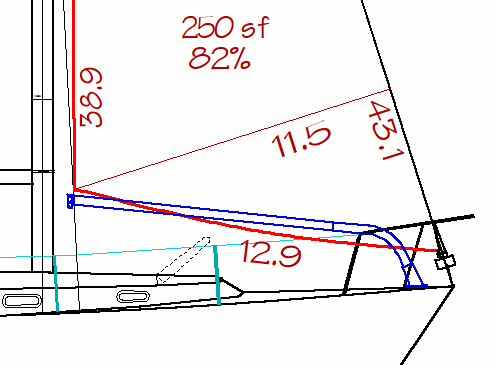
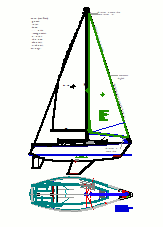
|
|
Installation The jib boom has a flanged base that bolts to the foredeck. I have all sorts of details of the installation on another page (Installation Details). The short version is I glassed in a reinforcing fiberglass plate under the deck, made a pad to match the deck camber above, and thru-bolted the boom base just aft of the roller furling drum. |
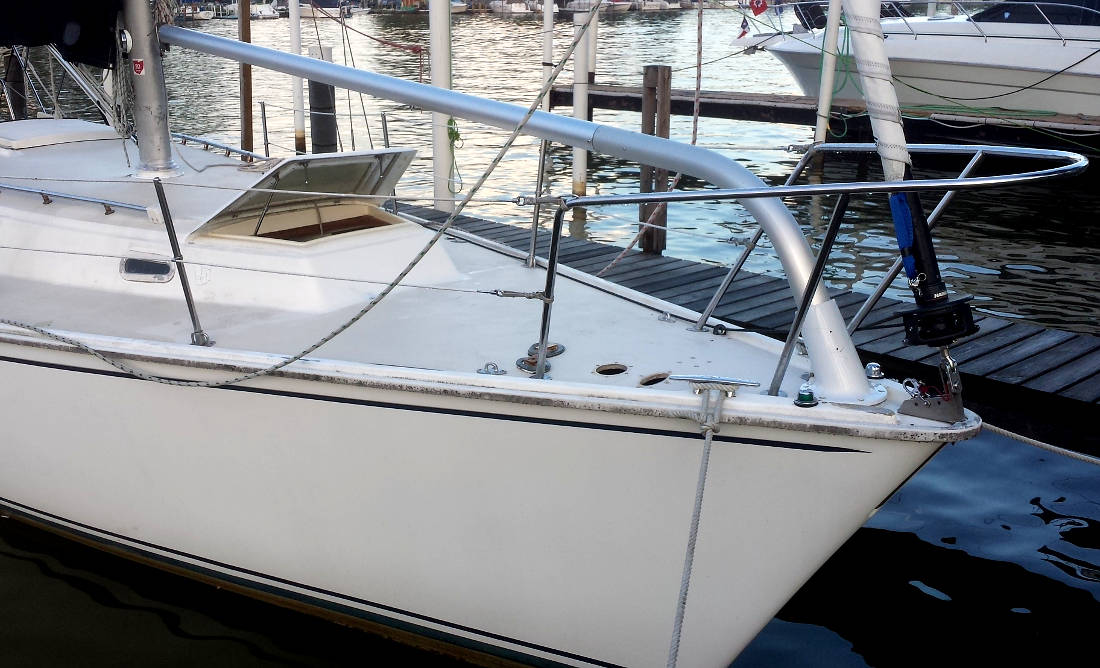
|
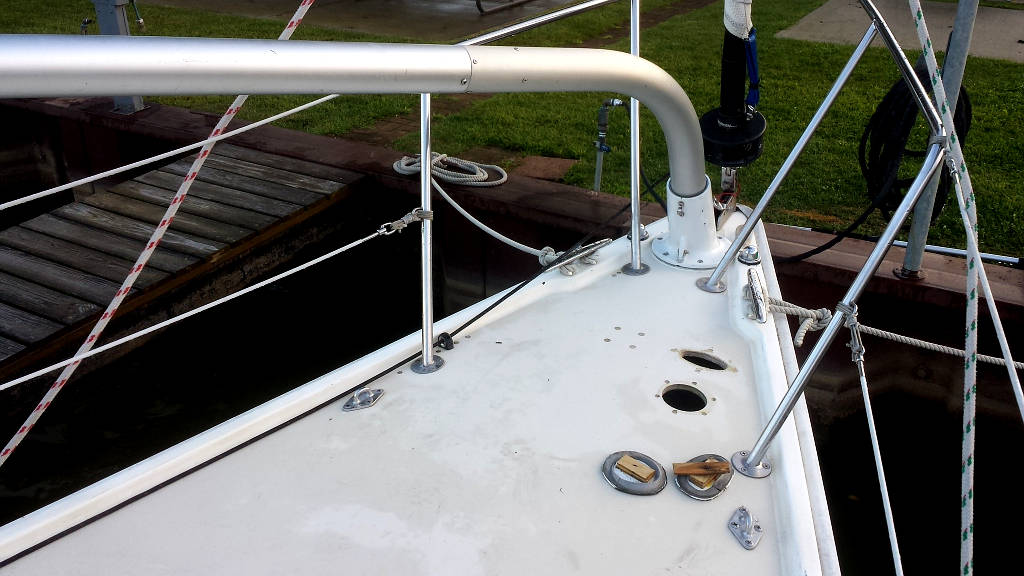
|
These photos show the test sail fully unrolled, with 4" rolled in, and with 8" rolled in.

Full |

4" Rolled |
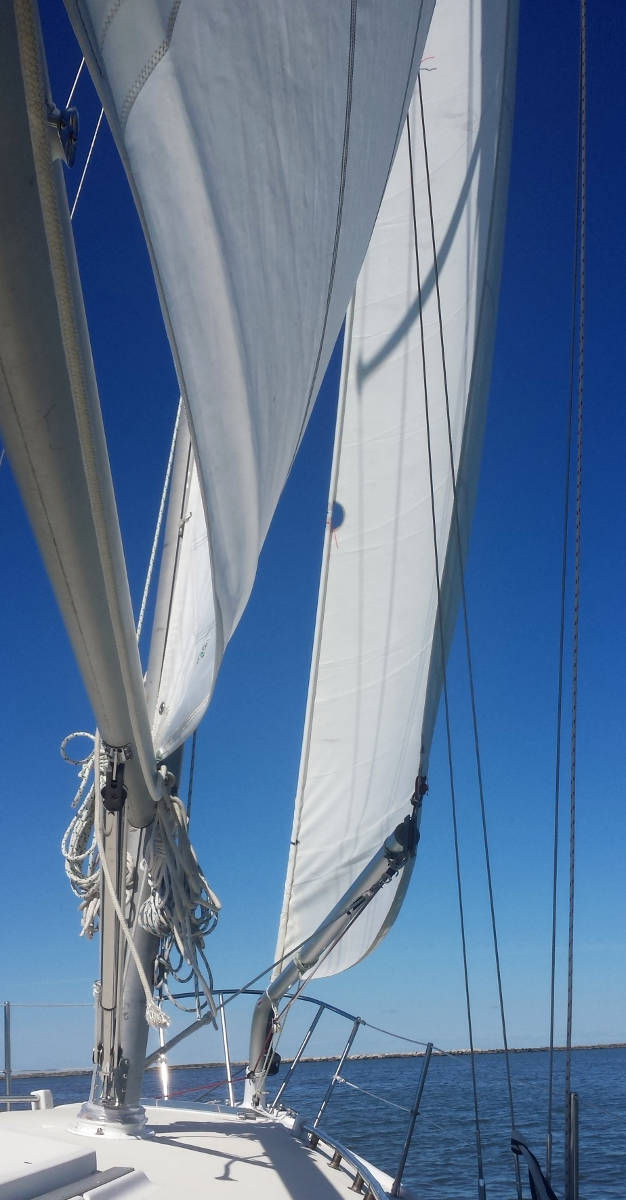
8" Rolled |
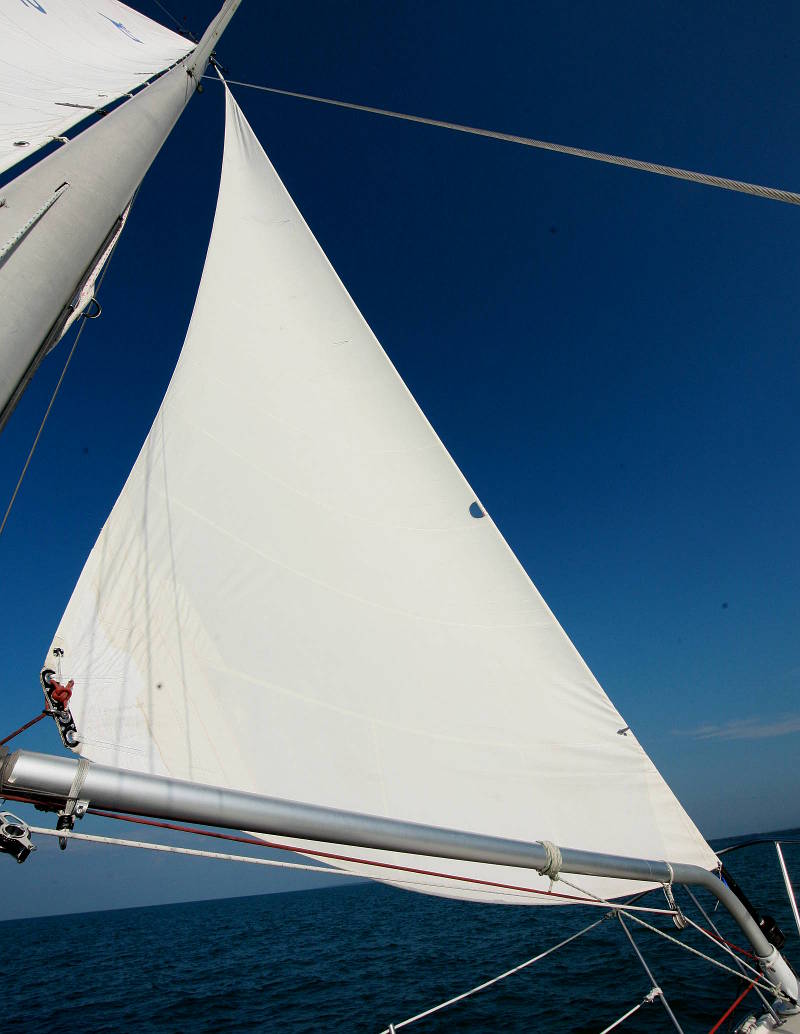
Close Reach |

Broad Reach |
|
Impressions So far the jib boom has exceeded my expectations. The small sail still moves the boat well though I have probably given up some speed in less than 8 knots depending on the point of sail but the tacks are faster with less loss of speed. Close hauled I think the jib boom with a properly fitted new sail will out-point the 125 genoa for perhaps a similar VMG and tacking is much quicker. On anything past a close reach the boom gives far superior control of the leech and keeps the whole sail powered up when the top half of the 125 genoa would be twisted off to the point of contributing nothing. On a deep run to dead-down wind the jib boom supports the sail and keeps it driving when any other jib would spend much of the time collapsing. I have made some gybes in 15-20 knots and the boom behaves very well. It swings across without fuss or drama. Certainly much less drama than the main boom. The rigging works fine but some improvements can be made. Line leads need to be refined and the line needs to be sized to at least 3/8" for easy handling. The sheet lead to the mast seems to work well and I can sheet the sail in farther than is practical. I have not found the boom to be a problem working on the foredeck though I have not anchored with it yet. But accessing the bow cleats is fine and the boom actually provides an excellent hand-hold moving forward. Overall I am very pleased with the performance of the boom and the ease of the self tacking. The 10M has a relatively small mainsail and large fore-triangle and these jib boom rigs are typically seen on boats with the opposite proportions. Those boats may take better advantage of the setup but I think this is going to work very well on the 10M. The 10M has forward lowers that reduce the practical length of the boom by about 4". I don't think that's a big problem and it leaves room to slip between the boom and the mast without having to climb over the boom. I have tried sailing with just the self-tacking sail without the main sail in 8-12 knots in remnant waves and fairly flat water behind a breakwall. Performance under these conditions was poor. In the 2-4' waves speed was low (1-2 knots) even on a close reach and it was difficult to tack the boat without loosing all headway and ending up in irons. It was a little better in the flatter water behind the wall with a bit more speed (2-3) but a lot of momentum was lost in the tack and the leeway coming out of the tack was huge. It took a very long time to get the boat back up on the wind. None of this is surprising. The headsail is fairly small and the CE is very far forward without the main. With the main I would expect to tack well and to get 3-4.5 knots in the waves and 4-5.5 in the flat water, maybe a bit better. I have been collecting performance data with the jib boom and made a table with some obsereved boat speed performance in various conditions as well as some comparisons to other boats I was able to sail with for a bit. All of it is annecdotal but it gives some info on how the boat performs with the boom and test sail. I hope to get some better comparative data to the 125 genoa but the season is winding down and that may have to wait until spring. |
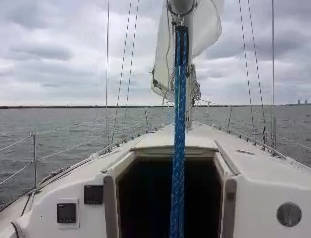 Video of jib boom tacking in 8 knots of wind |
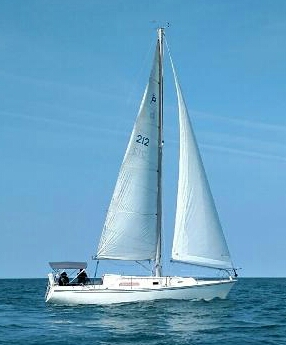
Sailing |
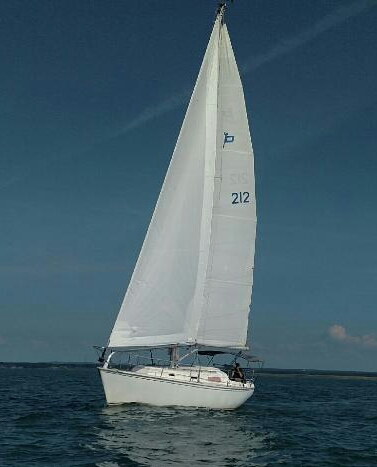
Sailing |

Sailing |
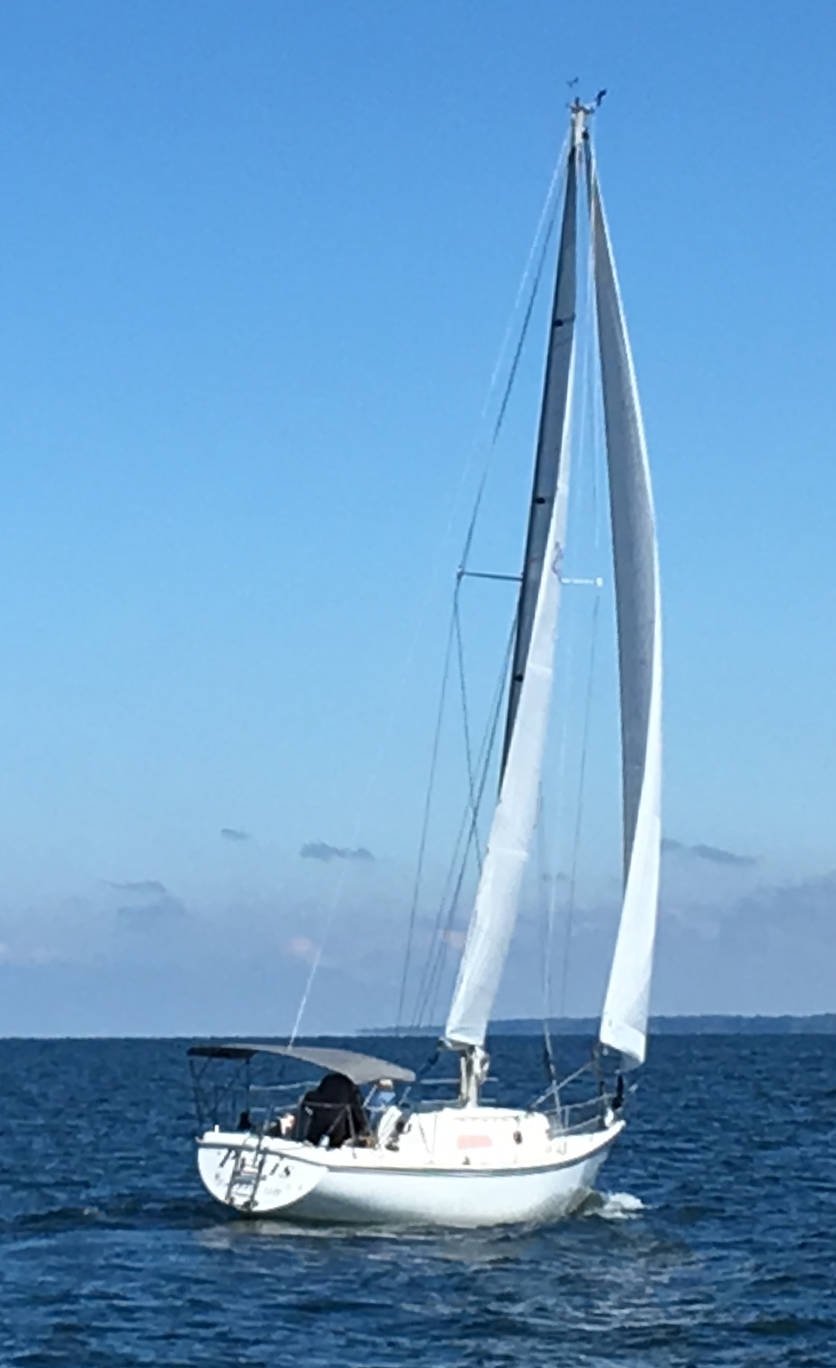
Sailing |

Sailing |
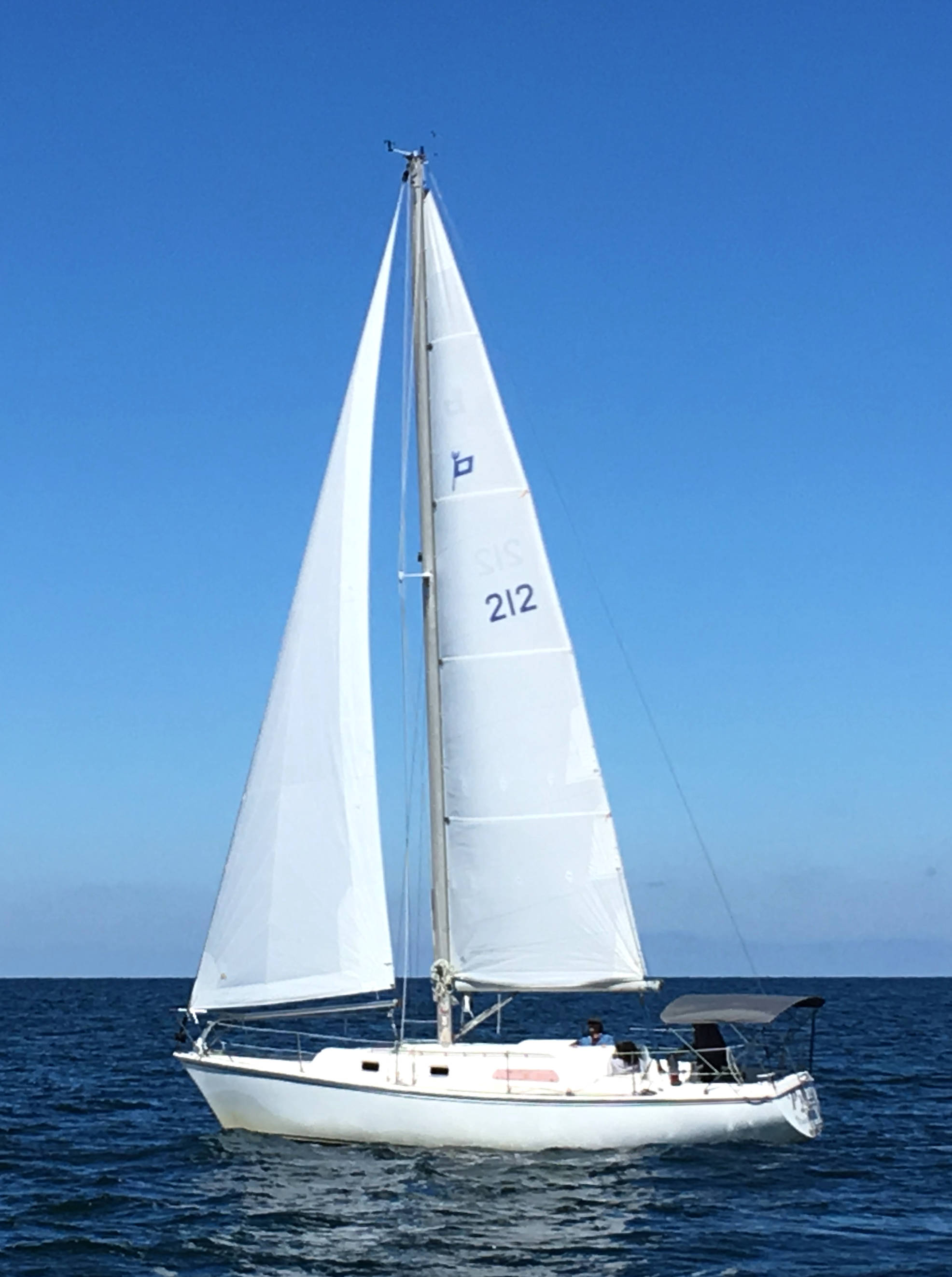
Sailing |
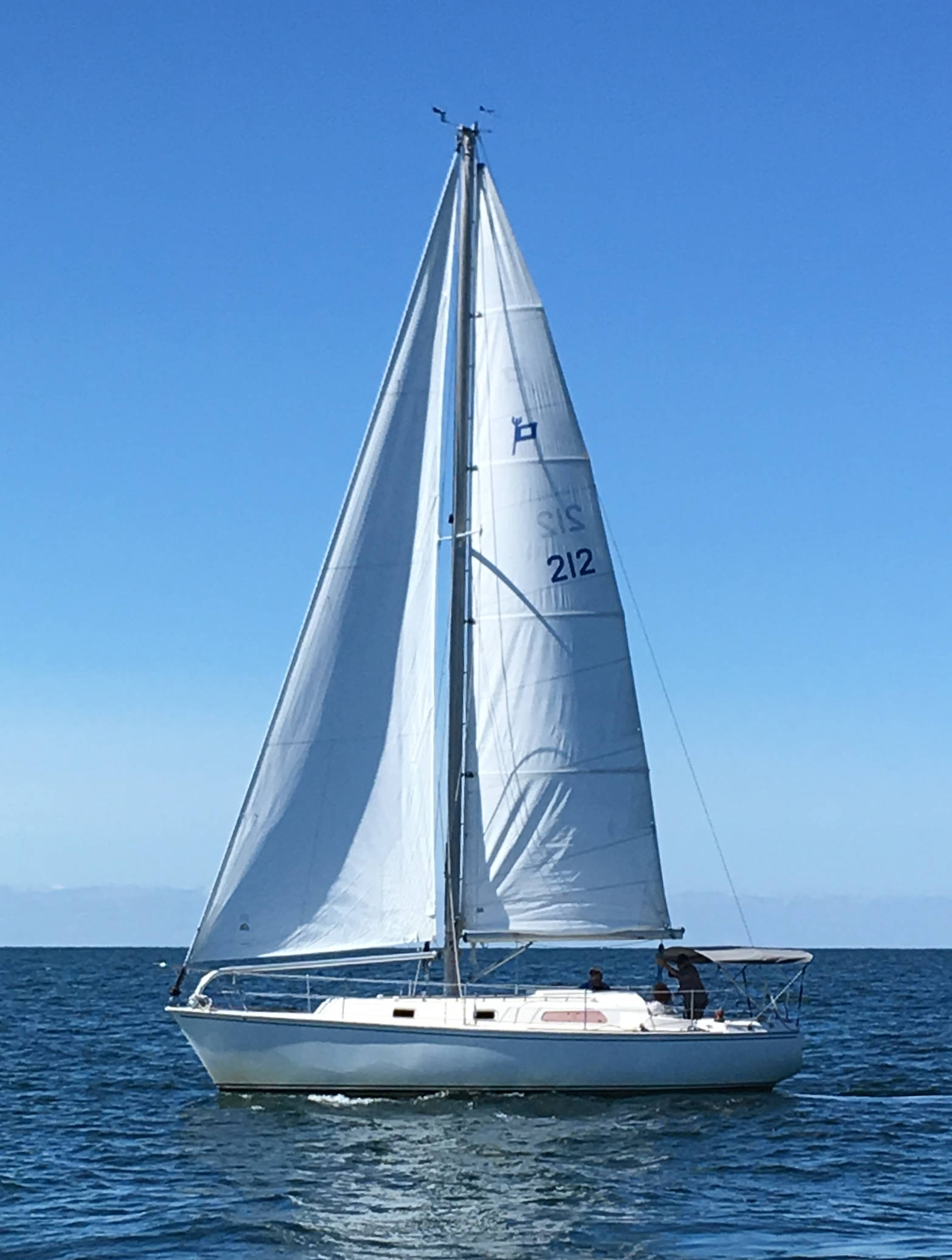
Mid Jibe |
Rigging a Bridle for the Sheet Lead
After some experimenting I added a bridle that runs across the cabin top ahead of the mast. The sheet can be connected to the bridle instead of the bail on the boom. The bridle is dynema and the sheet attaches a low friction ring that slides on the bride. The effect of the bridle is to get a better andgle on the sheet to keep the boom from pullung up and to keep the leech closed off. With the sheet lead to the mast bail the top of the leech tends to open up. This is desireable in heavy air (over 15 TWS) and in those conditions I switch the sheet lead back to the bail. But in lighter air the bridle seems to provide for better overall sail shape.
The bridle shown in these photos is lashed to the forward cabin-top handrail mount. I intend to add some padeyes for this mounting but for experimenting the handrail mount has been convienient. My handrails are secured from below with 1/2" fasteners are are very robust. I am not worried about them handling the loads from the jib boom in light to moderate winds (less than 15 TWS). Above that I think the sheet lead to the mast bail is better for strength and for letting the top of the leech open up a bit to depower the sail.
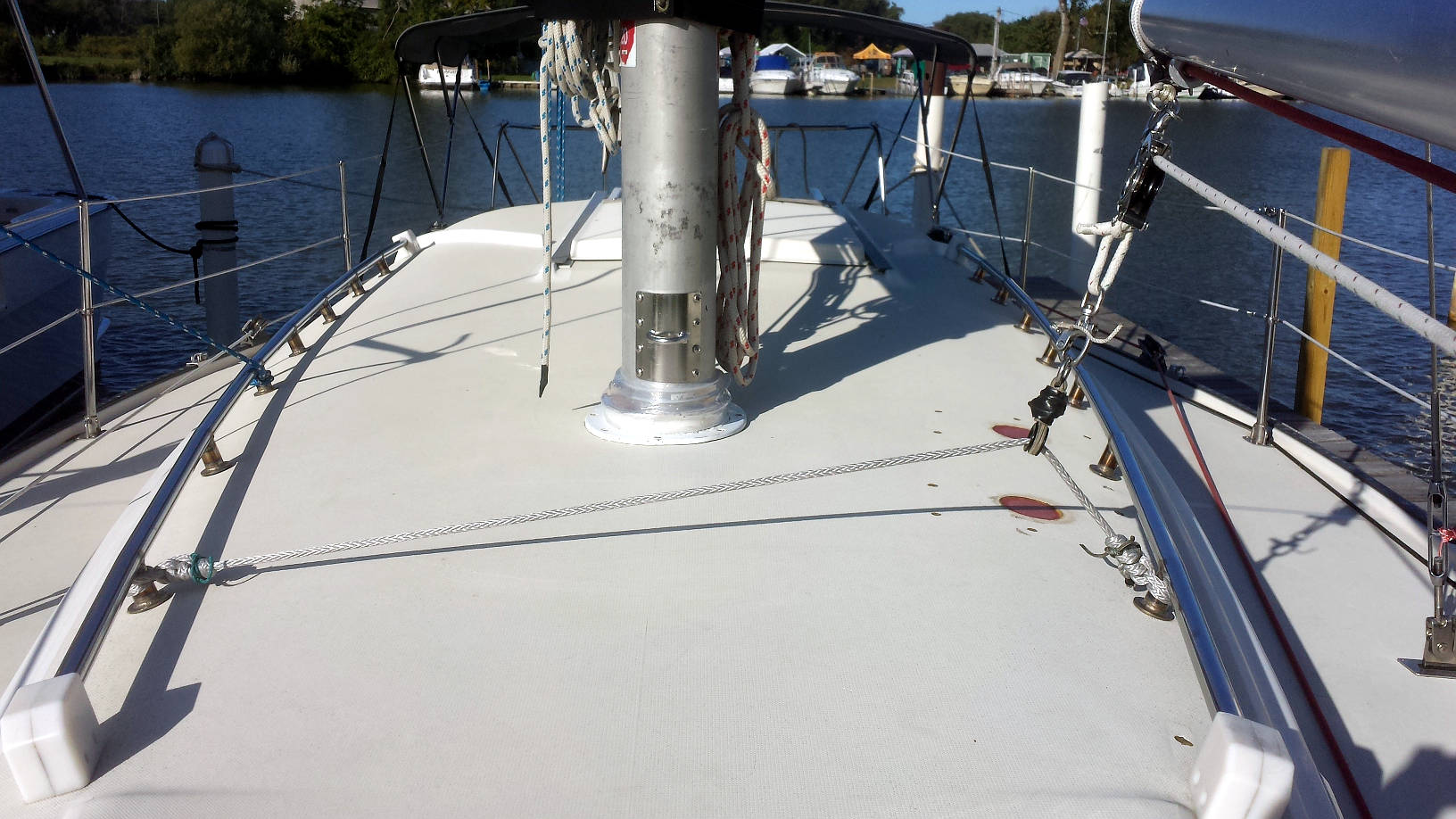
|

|
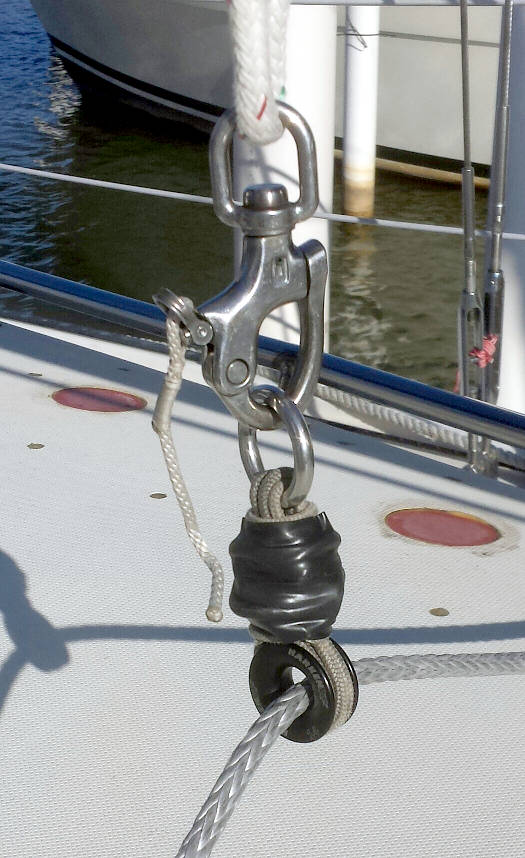
|
